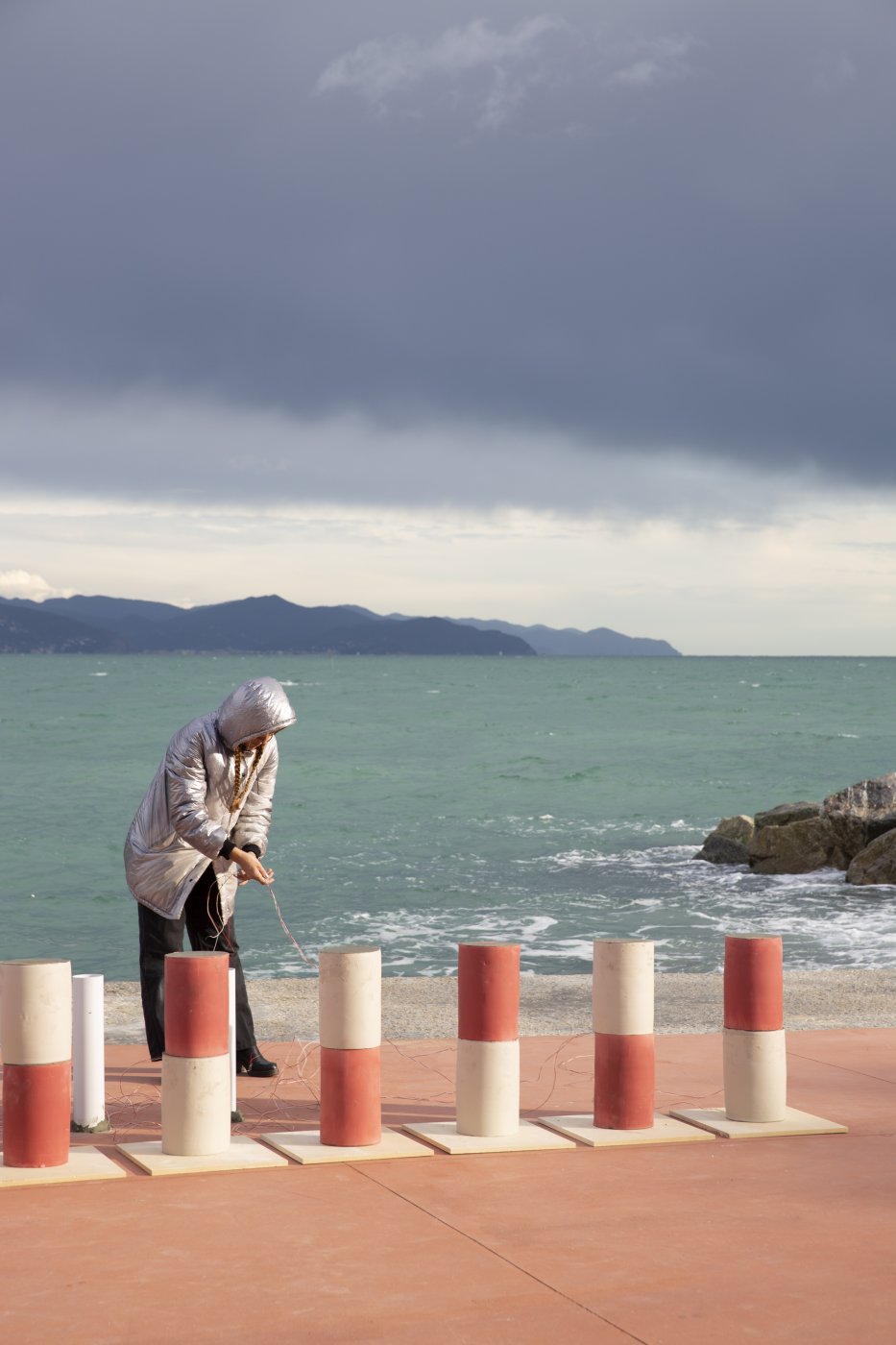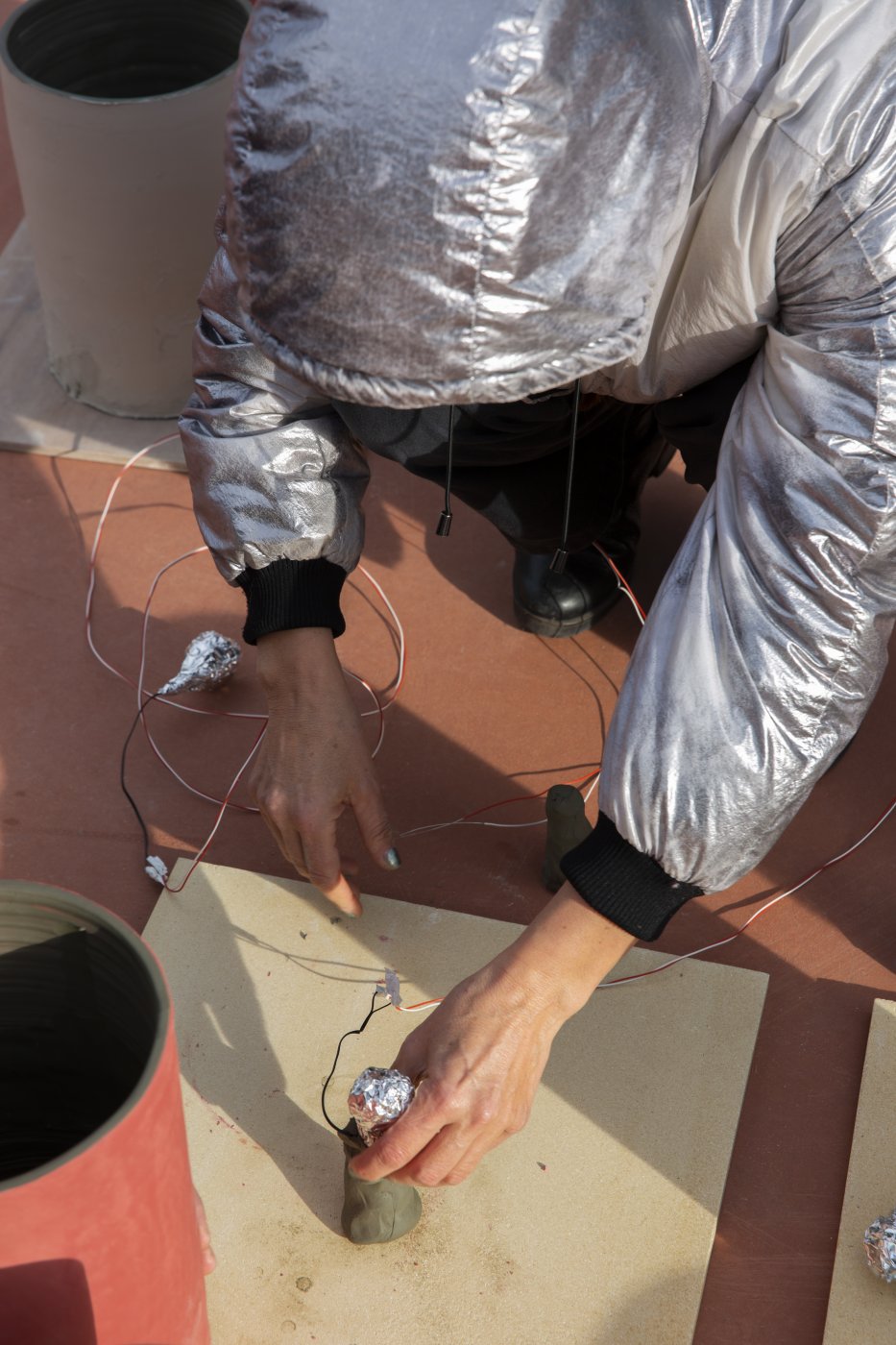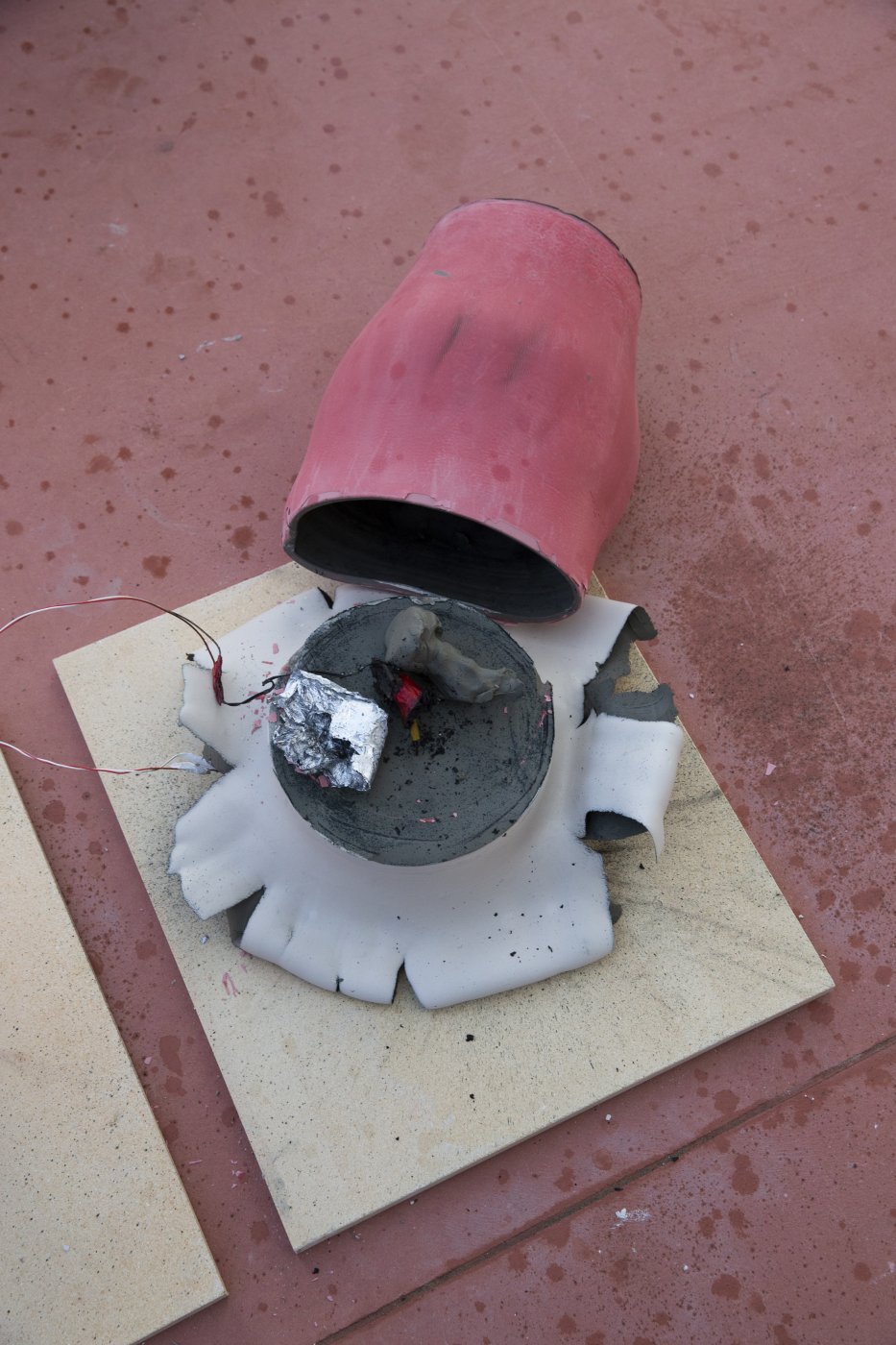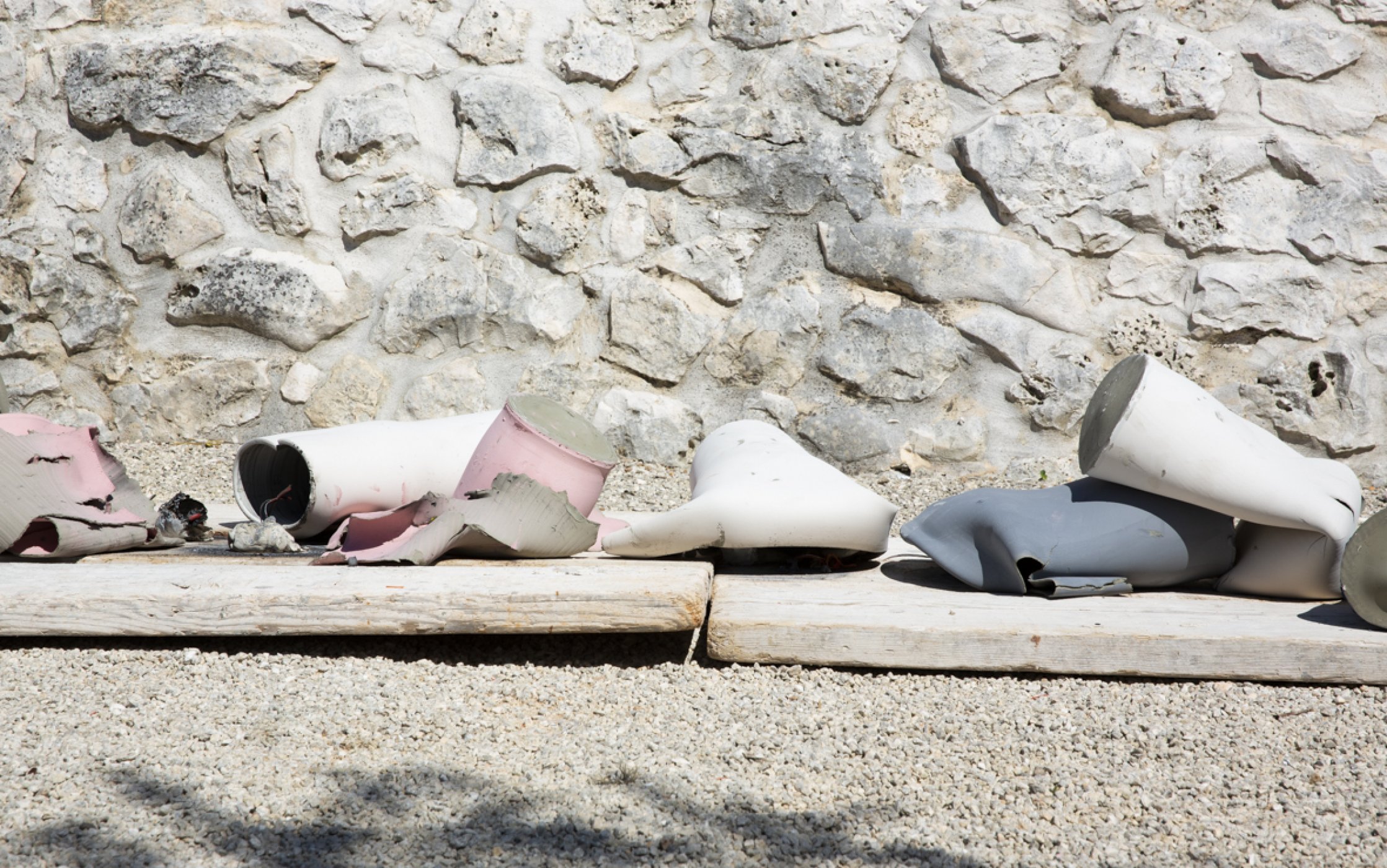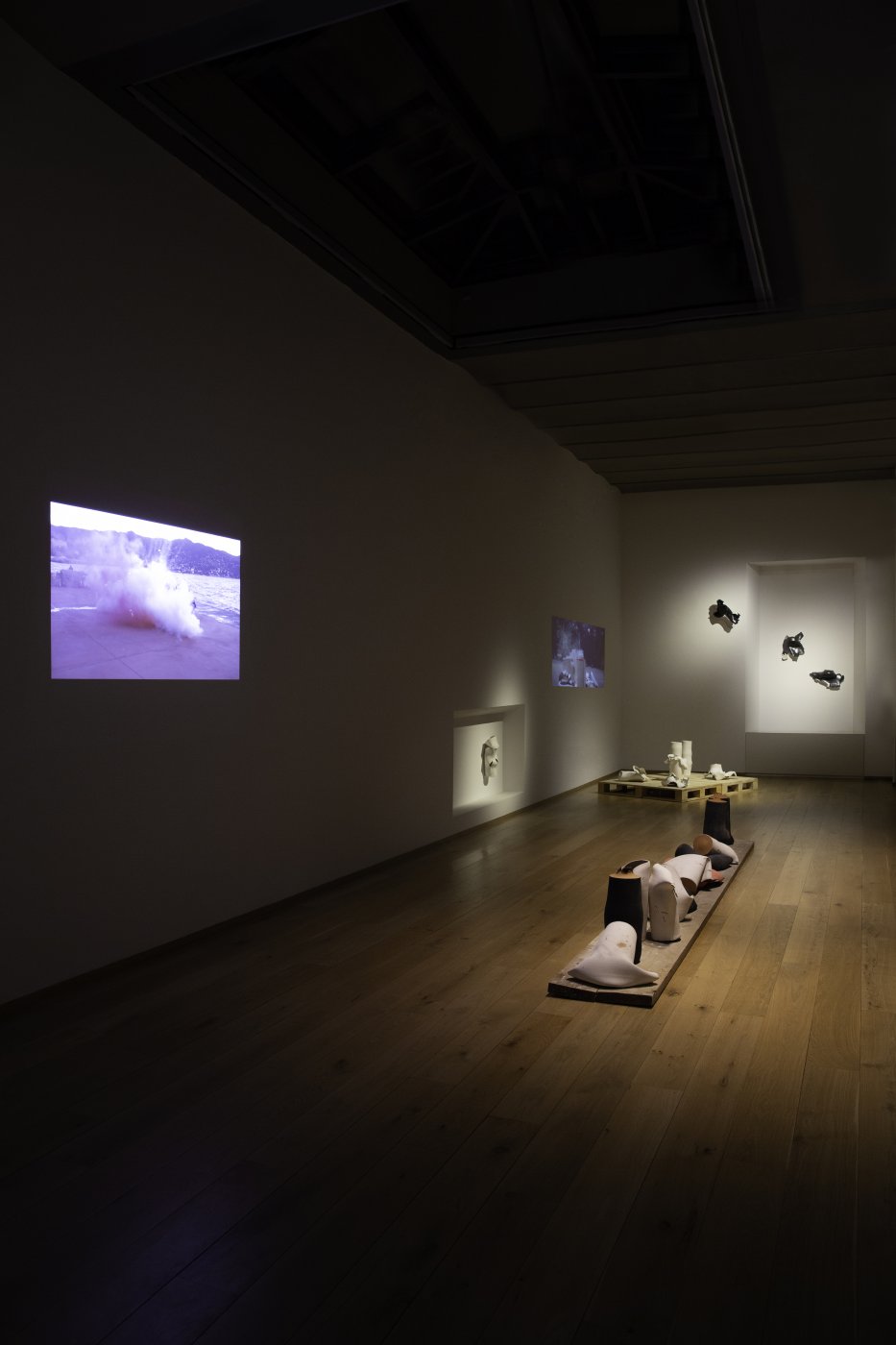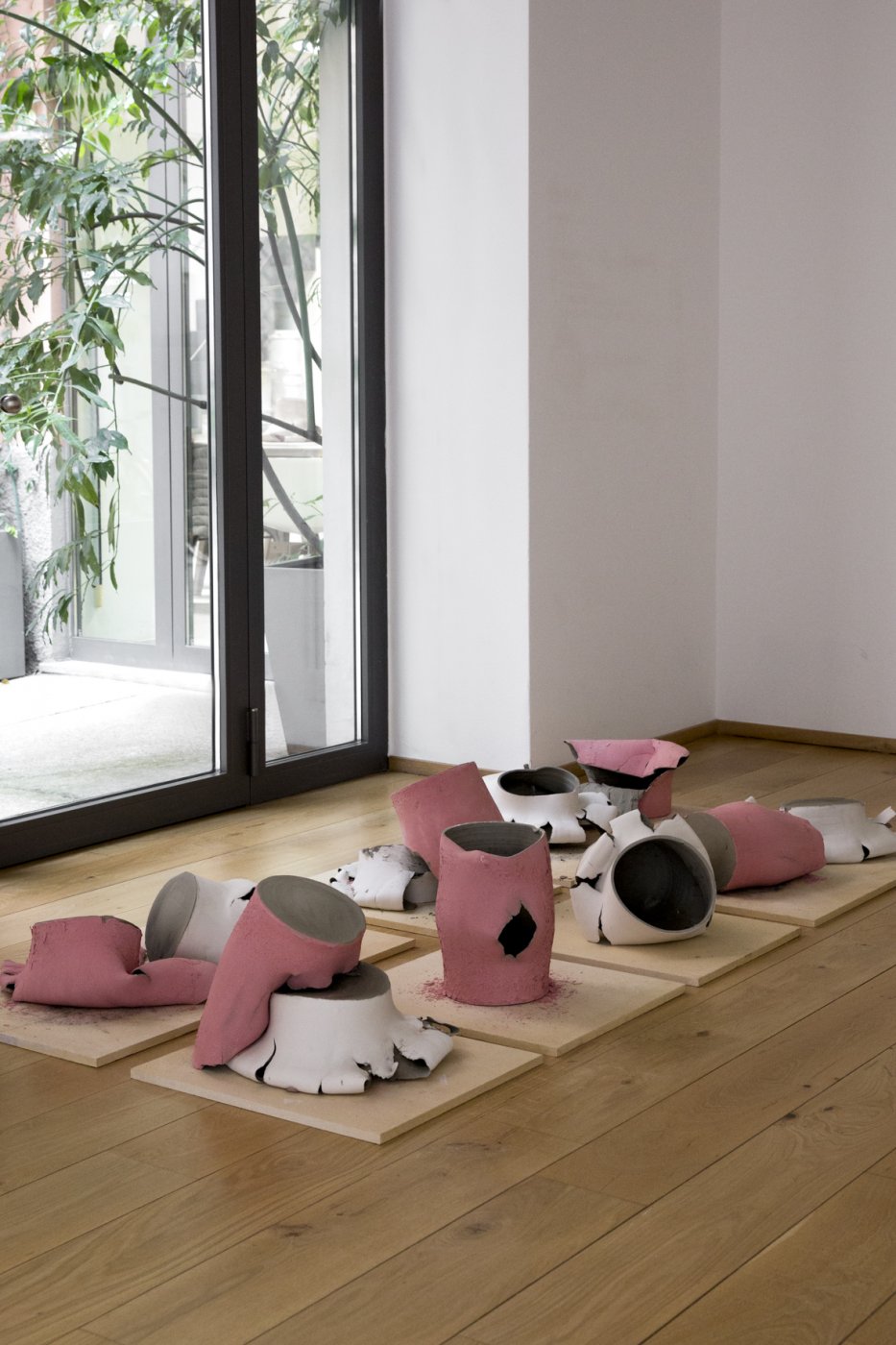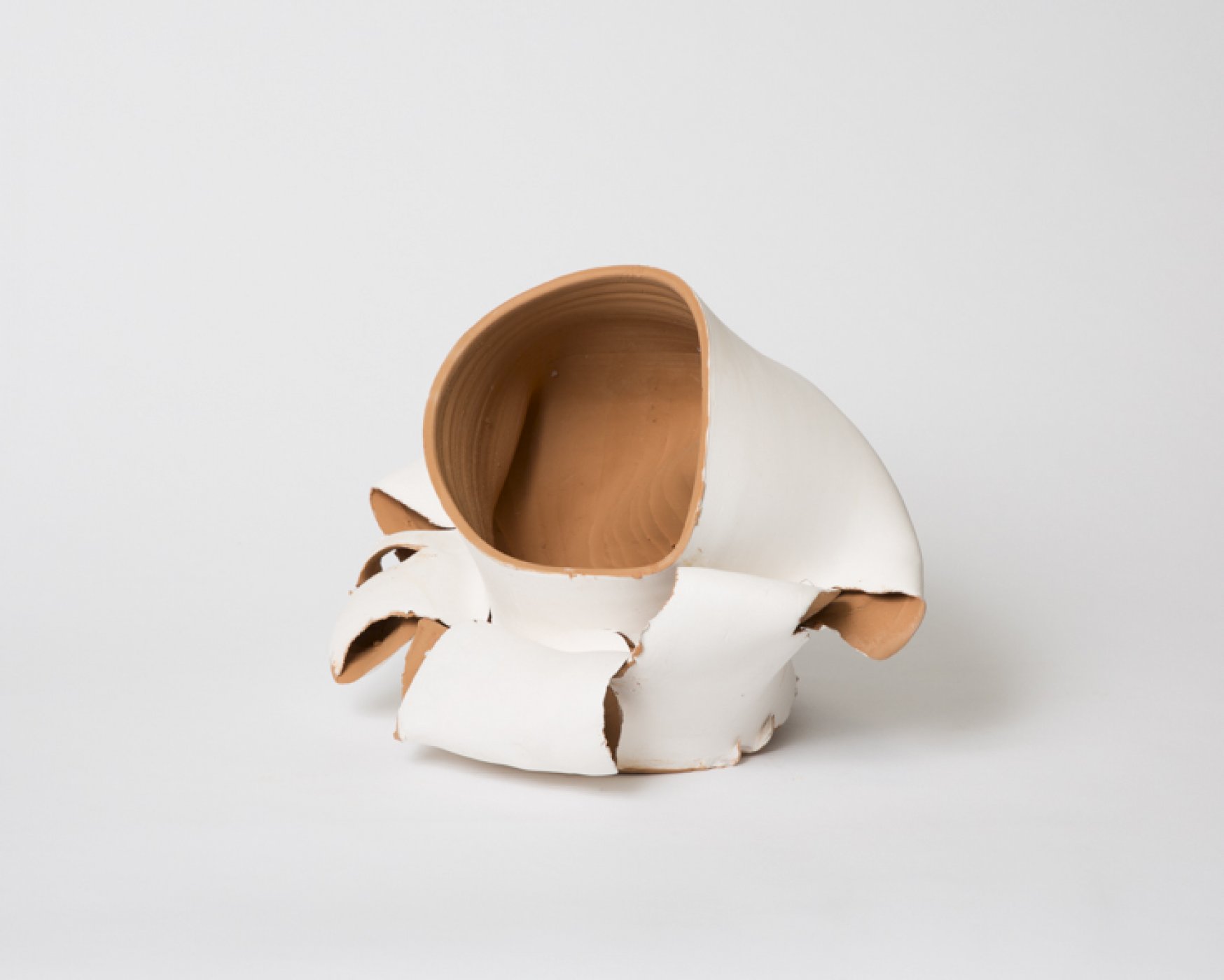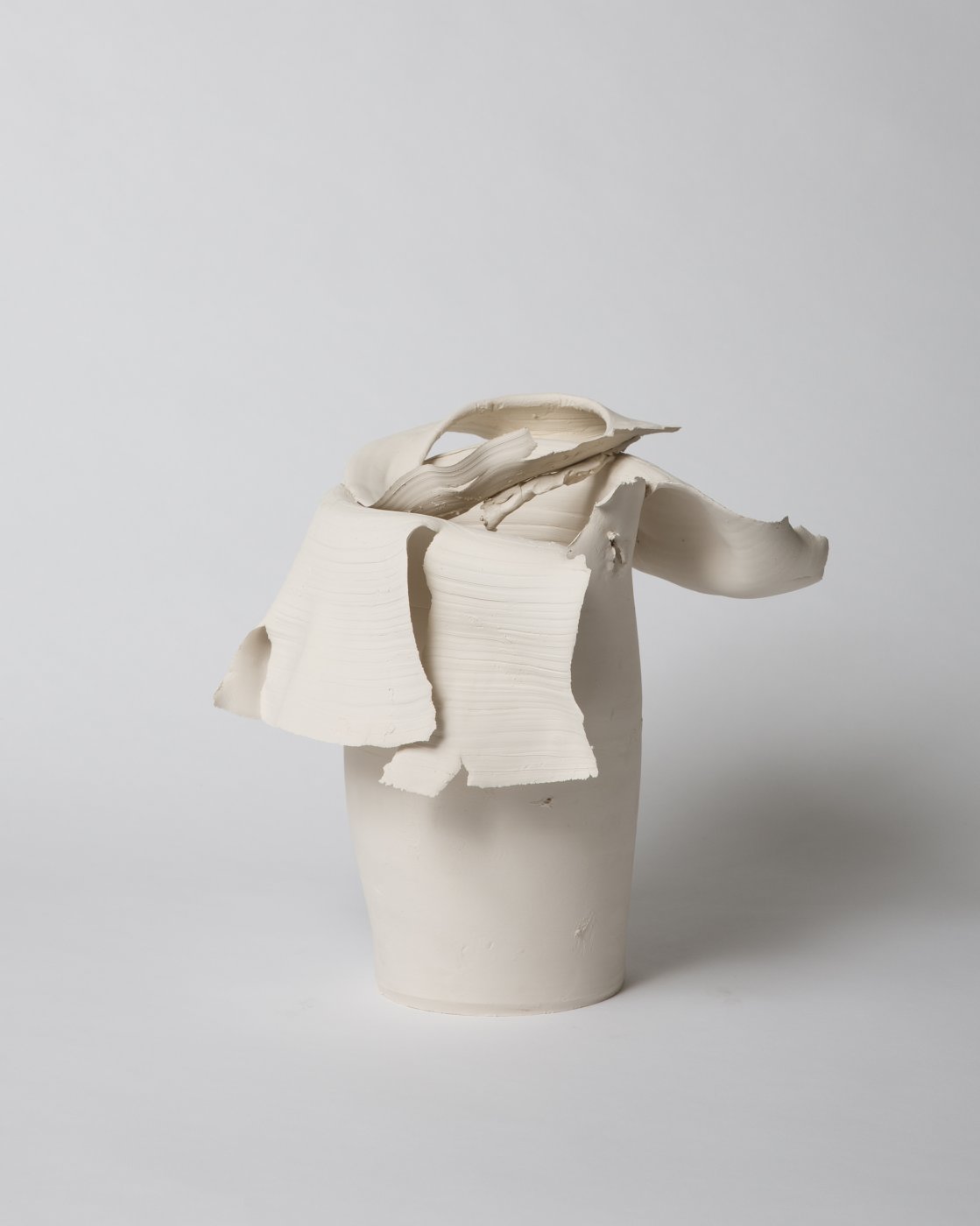Creative Executions. Loredana Longo
Creative Executions is the final act, what remains of the three performances that Loredana Longo held with Officine Saffi during the year.
Those who have studied her artistic experimentation know that Loredana Longo is a disruptive artist. In each instance, she is able to relate with discordant materials and creative processes through a singular presence, which dialectically combines vigour and design, physical strength with materials that are both soft and energetic. As the images of her performances reveal, her creative process includes the contemplative role of the participating public.
On each occasion, Loredana Longo was able to committedly relate to the context in which she acted, dialectically conversing and altering details and staging in each instance, because her work is also a theatrical machine, a process of constant transformation of her own practices. Last summer, the artist also expressed this within the prodigious setting of the Trulli in Itria Valley, where she projected her paradigmatic word "Victory" on the exciting tangle of smoke, an instant after the explosion of dozens of fresh clay pipes created by a craftsman.
Longo renounces the images and the verbal expression that characterised much of her earlier works, here experimenting with the self-sufficient structure of form, its abrasions, its concave and convex parts, the abrasions and penetrations of the material into the same material of the artwork.
The constellation of ceramic fragments that is composed after each performance shows the post-war aftermath of a battlefield: fragments retreating into themselves, pierced and violated by an explosion with unexpected and - above all - unpredictable results. "My true problem - as the artist herself stated - "is that I do not want to know exactly what will happen, I love that inscrutability of form that will eventuate, like life". New shapes are born from the primordial chaos. They are relics of a destroyed world that, despite everything, breathes and endures.
With this performative act, the artist wants us to reflect on the aesthetics of violence, a theme that has characterised her work for over twenty years. The rumble of an explosion, the physical disintegration of the ceramic objects made for the occasion, a material that has always been a focus of Loredana Longo’s artistic research, lead us to reflect on what violence, whether experienced or perceived, leaves in all our lives.And this is perhaps the most disruptive element in the work of Loredana Longo: because none of the violence that surrounds us is literally proposed.
The pyrotechnic explosion is not didactic: we do not see an execution before our eyes, on a quiet afternoon in the centre of Milan. Yet we do see an explosion, we do hear the detonation, we do see fifty cylinders collapsing in front of us, arranged in regular rows.
In Loredana Longo’s performance, the cylinders fall and shrivel up before our eyes. The fresh earth returns to close in on itself. We are spared nothing, even though it shows nothing. We do not see images, we do not support the spectacle of violence spoken of by Hal Foster. On the contrary, we breathe it.
And no further images are needed, no real bodies or physical flags are needed. The violence of the act and of our time speaks to us through that absence. The smoke leaves us with only the remains, the sound forces us to actively participate in the explosion. Violence is no longer deferred, hatred is no longer "courteous" yet.
In collaboration with FPAC- Francesco Pantaleone Arte Contemporanea (Milano, Palermo) The show comes with the curatorial essays by Irene Biolchini and Lorenzo Madaro
Those who have studied her artistic experimentation know that Loredana Longo is a disruptive artist. In each instance, she is able to relate with discordant materials and creative processes through a singular presence, which dialectically combines vigour and design, physical strength with materials that are both soft and energetic. As the images of her performances reveal, her creative process includes the contemplative role of the participating public.
On each occasion, Loredana Longo was able to committedly relate to the context in which she acted, dialectically conversing and altering details and staging in each instance, because her work is also a theatrical machine, a process of constant transformation of her own practices. Last summer, the artist also expressed this within the prodigious setting of the Trulli in Itria Valley, where she projected her paradigmatic word "Victory" on the exciting tangle of smoke, an instant after the explosion of dozens of fresh clay pipes created by a craftsman.
Longo renounces the images and the verbal expression that characterised much of her earlier works, here experimenting with the self-sufficient structure of form, its abrasions, its concave and convex parts, the abrasions and penetrations of the material into the same material of the artwork.
The constellation of ceramic fragments that is composed after each performance shows the post-war aftermath of a battlefield: fragments retreating into themselves, pierced and violated by an explosion with unexpected and - above all - unpredictable results. "My true problem - as the artist herself stated - "is that I do not want to know exactly what will happen, I love that inscrutability of form that will eventuate, like life". New shapes are born from the primordial chaos. They are relics of a destroyed world that, despite everything, breathes and endures.
With this performative act, the artist wants us to reflect on the aesthetics of violence, a theme that has characterised her work for over twenty years. The rumble of an explosion, the physical disintegration of the ceramic objects made for the occasion, a material that has always been a focus of Loredana Longo’s artistic research, lead us to reflect on what violence, whether experienced or perceived, leaves in all our lives.And this is perhaps the most disruptive element in the work of Loredana Longo: because none of the violence that surrounds us is literally proposed.
The pyrotechnic explosion is not didactic: we do not see an execution before our eyes, on a quiet afternoon in the centre of Milan. Yet we do see an explosion, we do hear the detonation, we do see fifty cylinders collapsing in front of us, arranged in regular rows.
In Loredana Longo’s performance, the cylinders fall and shrivel up before our eyes. The fresh earth returns to close in on itself. We are spared nothing, even though it shows nothing. We do not see images, we do not support the spectacle of violence spoken of by Hal Foster. On the contrary, we breathe it.
And no further images are needed, no real bodies or physical flags are needed. The violence of the act and of our time speaks to us through that absence. The smoke leaves us with only the remains, the sound forces us to actively participate in the explosion. Violence is no longer deferred, hatred is no longer "courteous" yet.
In collaboration with FPAC- Francesco Pantaleone Arte Contemporanea (Milano, Palermo) The show comes with the curatorial essays by Irene Biolchini and Lorenzo Madaro

